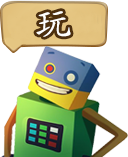
A programming language is used to control a computer’s actions. Programming languages are treated like human languages, but with consideration for the digital devices they are meant to communicate with. A human language has syntax and semantics. Syntax is the way words are written, including correct spelling and proper grammar to give each word its appropriate meaning. Semantics describes the context for a group of words. Programming languages follow the same principles. They can facilitate communication about the task of organizing and manipulating information, and to express algorithms precisely.
Programming of early computers was done using a vacuum tube with ON-OFF switches that had to be set by hand. The computer only understands binary or machine languages, which is very difficult for humans to code in since it requires every command and piece of data to be written in binary form. Machine language programming was too time consuming, resulting in the development of high-level languages that use natural language or traditional English words like OPEN, LIST, and PRINT.
Programming with vacuum tubes originated in the 19th century. Punch cards with encoded data replaced vacuum tubes in the 20th century. The 1940s saw the first electrically-powered digital computers and the first high-level programming language, which was developed between 1943 and 1945. ALGOL (ALGOrithmic Language) was followed by FORTRAN, and then by LISP. LISP is the second-oldest high-level programming language that remains in widespread use today; only FORTRAN is older. CBASIC (Beginner’s All-purpose Symbolic Instruction Code) was developed in the early 1960s for use by non-professional computer users.
LOGO was developed to introduce children to computers after CBASIC grew in popularity. Almost every language today is a derived from one of these languages. FORTRAN, LISP, and COBOL are still actively used by large institutions like the National Weather Service and the US Postal Service. Variants of CBASIC are also widely used.
The next major programming language to be developed was C, one of the most commonly-used programming languages today. Invented by Bell Labs in the 1970s, C is used in numerous applications, from desktop programs to cross-platform programs to space applications. Unix was the first major operating system to be written in C instead of in assembly. Today, Linux is written almost entirely in C, while both Windows 10 and Mac OS X have large portions of their code written in C as well. C was really just the beginning!
After the rise of C came many other languages that were developed to permit programming for Internet applications. The most popular of these is Java, an object-oriented programming language introduced in 1995 by Sun Microsystems. Java enables the distribution of both data and small applications called applets over the Internet. The major upside of Java is its machine independence, meaning that it can run on any kind of computer.
Now, almost 70 years after computers began their fast evolution, it’s your turn to start your programming journey. Try Robogarden now; register for free.
